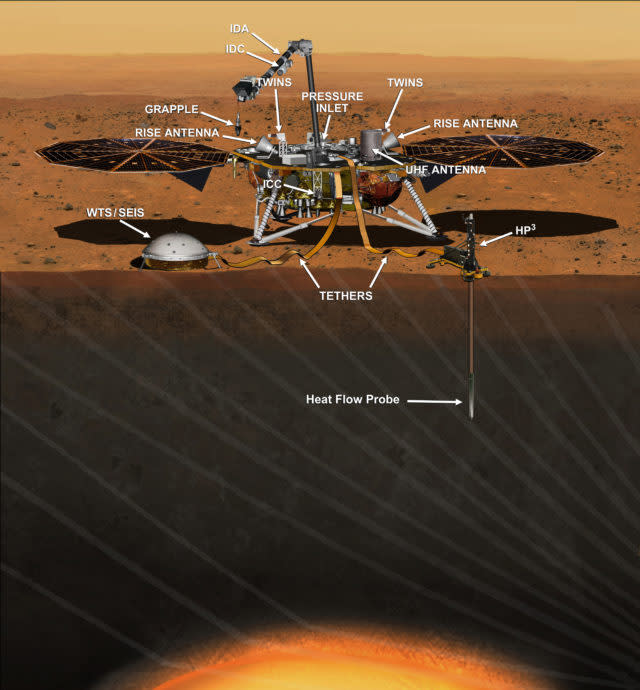First ‘Marsquake’ recorded by US probe fitted with British seismic sensors
British sensors on a Nasa spacecraft are have recorded their first “Marsquake”.
Scientists operating the American space agency’s InSight lander, which touched down on Mars in November last year, picked up a “quiet but distinct” seismic signal.
The signal was detected by the probe’s Seismic Experiment for Interior Structure (SEIS) instrument, which contains silicon sensors developed in the UK.

Professor Tom Pike, from Imperial College London, who leads the group of British scientists involved in the mission, said: “This is what we were all waiting for – the first quivering of the planet picked up by our sensors.
“We worked hard to develop the most sensitive silicon sensors on Earth to send to Mars as part of SEIS. Up to now we didn’t know if even that was going to be good enough.
“But it looks like Mars, although very much quieter than Earth, is giving us seismic signals we are able to clearly detect. Our first investigation of the interior of another planet is now under way.”
InSight was sent to Mars to study the internal structure of the Red Planet and shed light on how rocky planets, moons and meteorites in the solar system formed.
Key components of SEIS are three seismic sensors developed by Imperial College London, Oxford University and the RAL Space laboratory in Didcot with £4 million funding from the UK Space Agency.
The instruments are sensitive enough to detect motion at sub-atomic scales.
Science Minister Chris Skidmore said: “Detecting these quakes on a planet 140 million miles from Earth is a spectacular feat of science and engineering – a testament to the UK’s world-leading science and engineering space sector, including our fantastic university research base.”
In December the British SEIS sensors captured the first sounds ever recorded directly from Mars.
The haunting low rumble was caused by vibrations from Martian wind.

 Yahoo News
Yahoo News 
